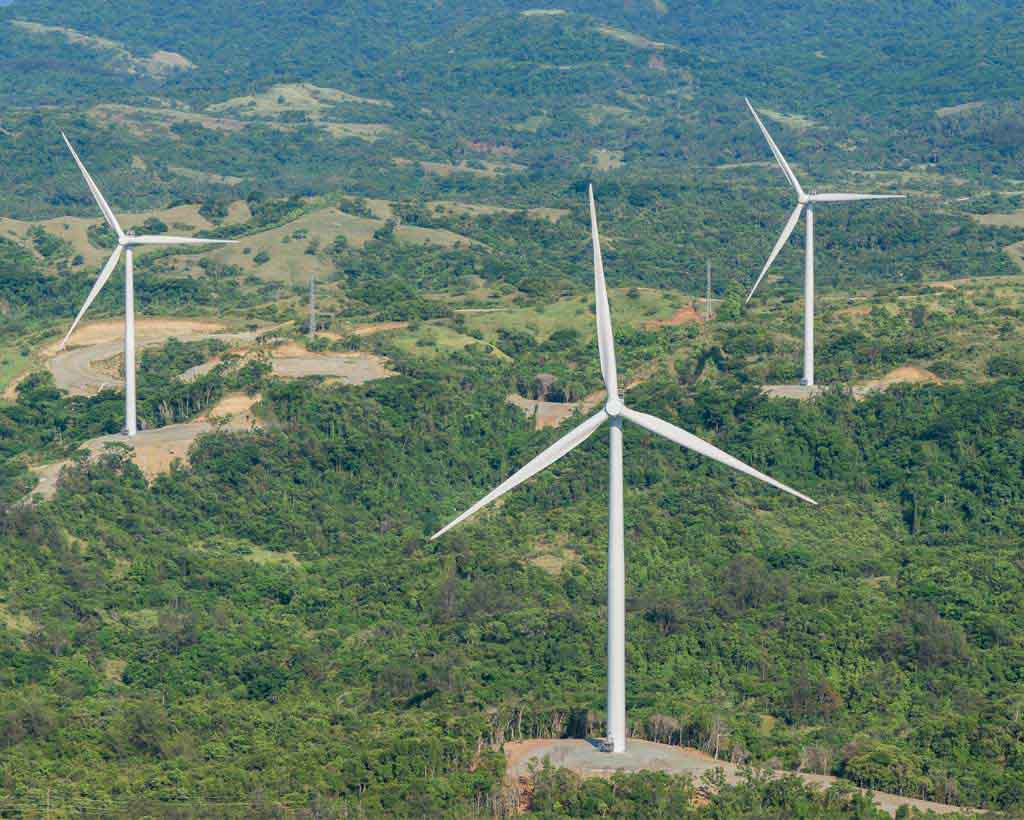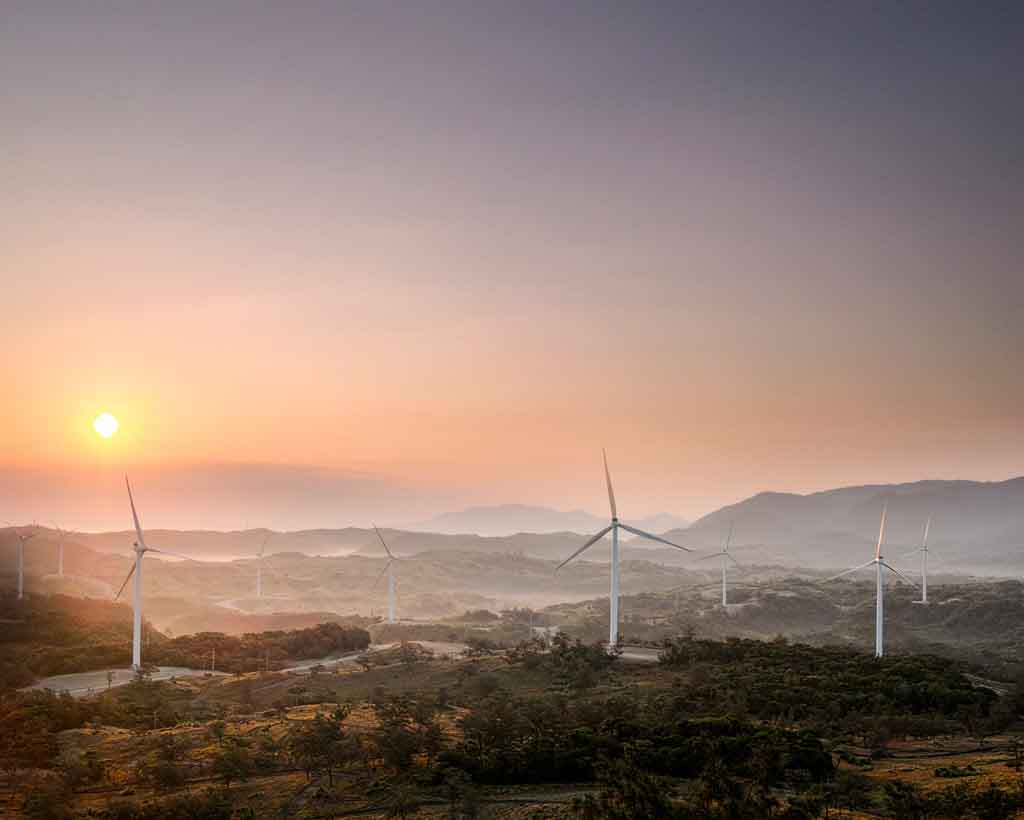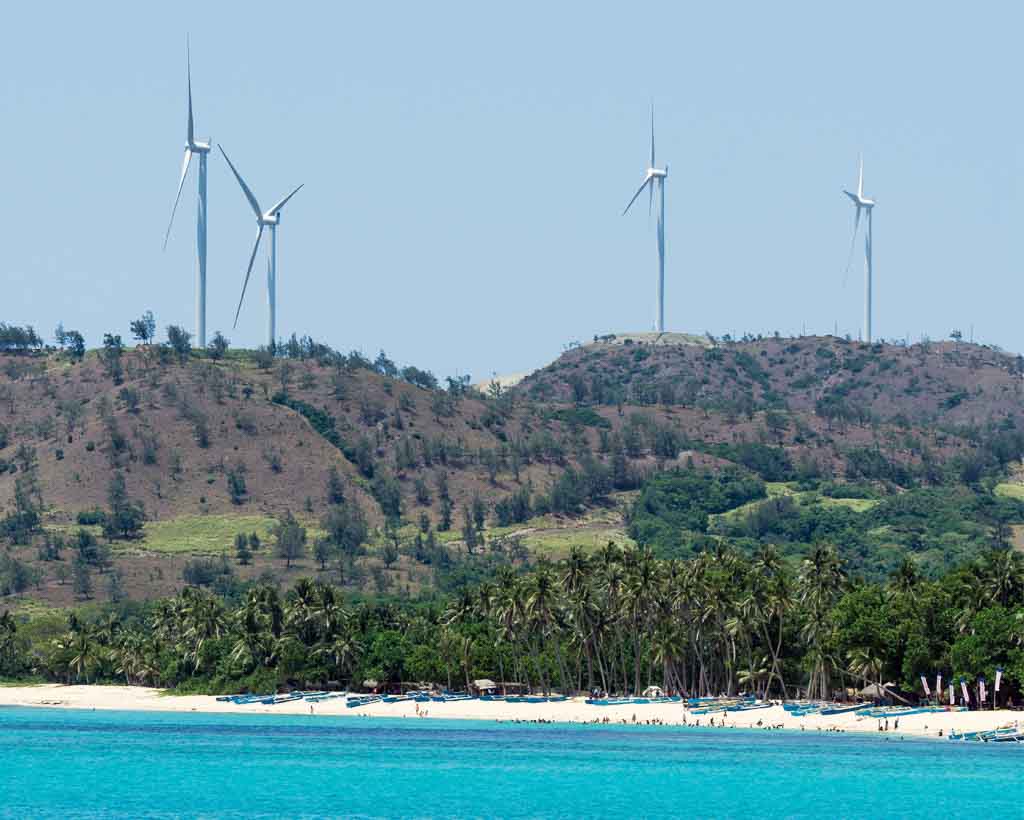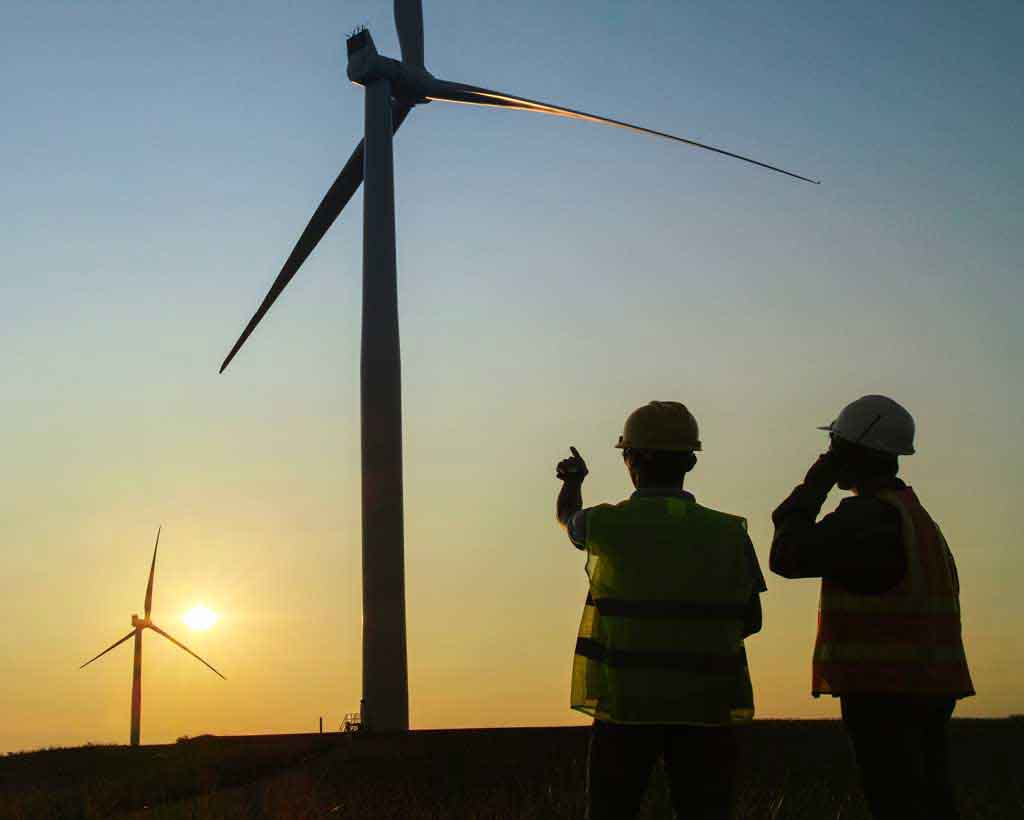Independent wind energy for the Philippines
A wind farm on the Philippine island of Luzon ensures an increasingly independent supply of clean electricity for the population.
In 2015, the share of renewable energies in the Philippine electricity mix was about a quarter. Only five percent of the electricity came from biomass, solar and wind power plants. The island nation in the western Pacific has a wind power potential of 76 gigawatts. The Caparispisan wind farm in the province of Llocos Norte harnesses this potential. On 625 hectares, 27 turbines with a capacity of 81 megawatts generate an average of 270,000 megawatt hours per year, which have been fed into the Philippine grid since 2014.
Almost 22,000 people live in the project area, mainly from agriculture, fishing and tourism. The wind farm operator has set up a comprehensive programme to improve their living conditions and protect the environment. For example, new water tanks and filter systems were installed and hospitals were supported with donations of materials.

As the name suggests, wind turbines use the power of the wind to generate energy. During this process, a generator located inside the wind turbine converts kinetic energy into electrical energy. As energy is still mainly generated from fossil fuels in many areas around the world, clean wind energy can replace some of this fossil, high-emission energy and verifiably save CO2 emissions.
In most cases, the sustainably generated electricity from the wind power projects is fed into a regional power grid, which diversifies the power supply and improves energy security in regions that are frequently affected by power shortages and outages. A project often creates increased job opportunities for the local population and the area can be used for additional activities, such as agriculture. Wind power projects make an important contribution to a clean energy supply worldwide and contribute to sustainable development with respect to the UN Sustainable Development Goals (SDGs). Wind energy projects in the ClimatePartner portfolio are registered with international standards.
Explore our projects
Biochar for Climate Action, Healthy Soils, and Better Harvests

A certified climate project combined with additional commitment

Expansion of renewable energy generation in Asia

Ceramic water filters save CO2 and improve health

Improved cookstoves worldwide – for better health and cleaner air

A certified climate project combined with additional commitment

Powering access to renewable energy in Africa

A certified climate project combined with additional commitment

Restored ecosystems remove carbon

Turning degraded farmlands into healthy ecosystems

Improved cookstoves - better for health and the environment








